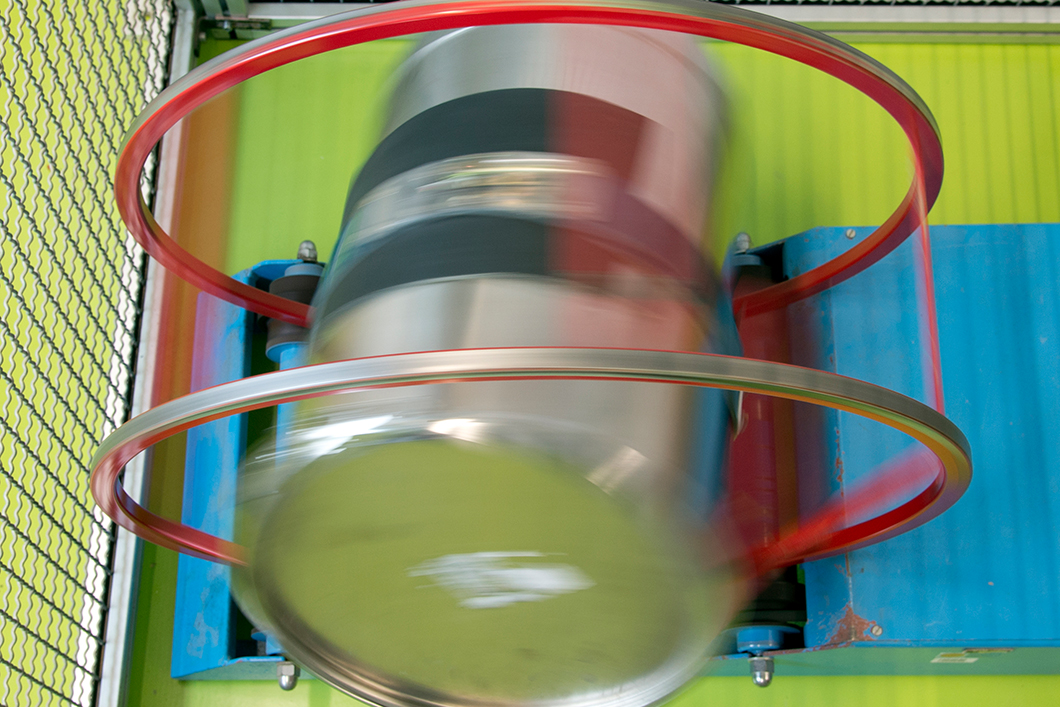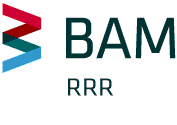
Exercise wheel mixer with 30 l stainless steel barrel for the homogenization of solid, free-flowing and fine-grained materials, e.g. soil, flour, wood
Source: BAM
Interlaboratory comparison can be performed with different objectives in mind. They are used, for example, to validate analytical procedures, characterise samples (e.g. reference materials), or test the suitability of laboratories. This final objective is a key element in external quality assurance for testing laboratories, and is expressly recommended as such in the standard DIN EN ISO/IEC 17025 (General requirements for the competence of testing and calibration laboratories).
Interlaboratory comparisons are principally performed by simultaneously measuring several laboratories on identical (homogeneous) partial quantities of the sample or material, using identical or different procedures (depending on the objective of the test). The statistical evaluation of interlaboratory comparisons enable statements on the accuracy (correctness and precision) of analytical procedures, characteristic values of samples/reference materials and the measurement capacity of the laboratories taking part.
BAM participates in defining technical regulations for the organisation, performance and evaluation of interlaboratory comparison and individual proficiency testing. BAM also makes the information system EPTIS available, which contains detailed information about many proficiency testing (PT) schemes provided worldwide. BAM offers PT for selected areas, some of which are performed regularly (e.g. "contaminated soil").
Current announcements of BAM proficiency testing in which laboratories – both within Germany and internationally – are able to take part are available in our BAM Webshop.
Interlaboratory comparisons
Organic and inorganic parameters in contaminated soil
Regular laboratory intercomparison based on the agreement between Oberfinanzdirektion Hannover as the central office of the Leitstelle des Bundes für Boden- und Grundwasserschutz and the German Accreditation Body DAkkS (search in EPTIS).
BAM regularly organises interlaboratory comparisons on the analysis of waste wood.
Hybrid mixtures
In 2022, BAM organises the first interlaboratory comparison for the determination of safety characteristics for hybrid mixtures.
Dangerous goods and hazardous substances
BAM, the company quo data and PTB jointly operate an interlaboratory programme for testing the hazardous characteristics of dangerous goods and substances (CEQAT DGHS).
Emissions of volatile organic compounds from materials
BAM organises laboratory intercomparisons on the measurement of volatile organic compounds (VOCs) that are emitted from building and construction materials. These emissions are measured by means of a test chamber (search in EPTIS).
Porous and dispersed materials
BAM produces and certifies reference materials for the development of methods in the field of gas adsorption and mercury porosimetry. This laboratory intercomparison is held in the frame of certification (search in EPTIS).
The Pan-African Cement Proficiency Testing Scheme
The Pan-African Cement Proficiency Testing Scheme (PACE-PTS) is a joint cooperation between BAM and the German Metrology Institute (PTB).
Proficiency testing
As well as the option of taking part in interlaboratory comparisons, individual proficiency testing (without interlaboratory comparisons) are available from BAM. Laboratories use these for external quality assurance and, for example, they can be a required step in the accreditation process.


